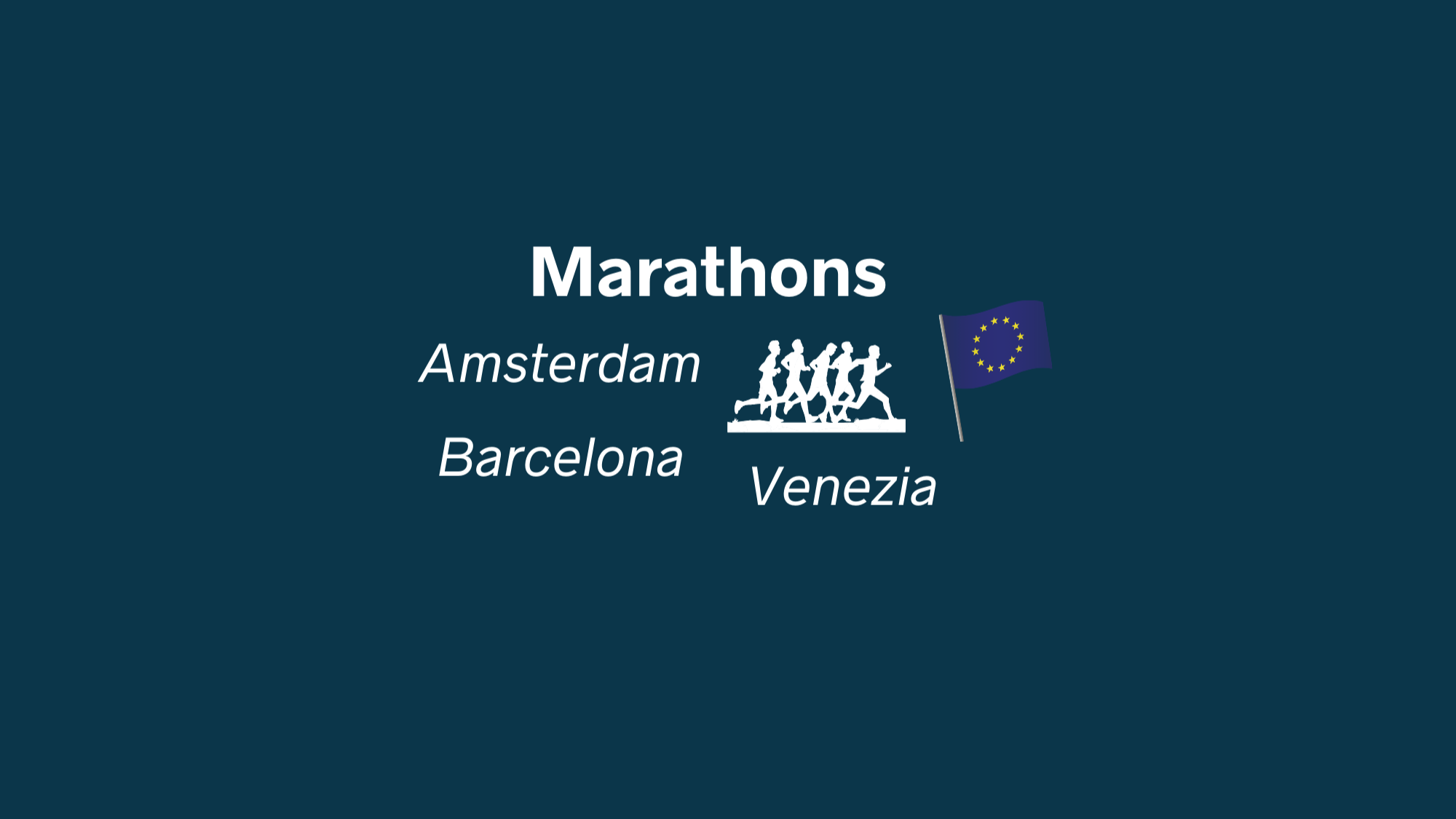
5 Things to Know Before Training for a Marathon
Deciding to train for a marathon is not a decision to be taken lightly. The marathon is a demanding event that will push your body and mind to its limits. This is true for a first marathon but also remains very true for the 10th or 20th marathon.
It is recommended, especially if it is the first marathon, to consult a sports doctor to ensure that there are no medical contraindications. Beforehand, you must also objectively assess your fitness level to define an adequate training duration and a gradual increase in power with the ultimate goal of running the marathon and having fun (and not suffering from the first to the last kilometer, even if there will be difficult moments to get through anyway). Depending on your fitness level and/or experience, it may be wise to first go through a training phase for a 10km or a half-marathon before 'climbing' to the mythical distance of the marathon. If the experience tempts you and you are ready, no more hesitation, you have to go for it. Crossing the finish line of a marathon is still magical!
To help you with this great challenge, here are 5 things to know before starting your marathon preparation:
1. Choose and plan your training program carefully
The starting point in terms of fitness and experience of this type of event and the time objective are the key parameters for choosing a training plan. To simplify, the lower the starting point in terms of fitness (everything is relative!), the more it is advisable of course to extend the duration of the marathon training which can extend roughly over a period of 3 to 6 months. The higher and more ambitious the time objective, the higher the training frequency will be and will include high intensity sessions.
There are many sources to find your ideal training plan. Once you have chosen it, you will need to plan the different sessions each week, respecting the order of the sessions as much as possible and especially the recovery periods between sessions. If you can't fit in or if you miss one of the sessions of the week, don't panic. If you have been diligent on almost the entire program, you can afford to miss a session here and there. This should still be exceptional to benefit from the cumulative effect of training week after week. You must also be careful to respect the progressive increase in load and not try to burn the stages under penalty of potentially injuring yourself, which can partially or totally compromise the objective of participating in the marathon that you had targeted.
2. Ensure the correct frequency and variety of training
The second key point is to ensure in your training plan and then in your daily life to define and apply a frequency and variety of training that correspond to your level and your objectives. For the frequency, a minimum of three sessions is required and outside of high-level elite runners, a frequency of 5 sessions per week would rather be the upper limit recommended. Below 3 sessions, the body's adaptation risks being insufficient and on D-Day, the marathon could quickly turn into an interminable obstacle course, especially in the second half. Above 4 sessions per week, beware of the converse risk of injury linked to the phenomenon of overtraining. In any case, it is essential to plan at least one day of complete rest per week (without any sports practice).
In terms of the variety of training, it is important to ensure that each week there is diversity between long runs, threshold runs, recovery runs and speed or interval sessions (short or long). The distribution of the different sessions can be built according to the number of weekly sessions with at least three constants: a recovery run, an interval or speed session and a long run.
|
Sessions |
Recovery Exit |
Exit at the threshold |
Short intervals |
Long intervals |
Long outing |
|
3 |
1x |
1x |
1x |
||
|
4 |
1x |
Option A |
Option B |
1x |
1x |
|
5 |
1x |
1x |
1x |
1x |
1x |
3. Take care of recovery & sleep
Without good recovery and quality sleep during marathon preparation, it is difficult to progress and the risk of injury increases significantly. Rest allows muscles to repair themselves, that is to say, to repair the micro-tears that training causes. Recovery also helps strengthen the immune system and therefore stay healthy while your body gradually gets used to a level of intense physical activity. Finally, on a mental level, recovery and sleep are essential to avoid fatigue due to the repetition of training and to stay positive and focused on the goal.
If there is a key moment during the entire marathon preparation where you have to pay even more attention to getting good recovery and quality sleep, it is during the last week, just before the event. This last week is crucial to arrive as fresh as possible on D-Day. The intensity and duration of training will have to drop significantly during this last week while recovery and sleep periods will have to increase during this same period.
4. Ensure you eat a balanced diet and drink enough water
Just like sleep and recovery, nutrition and hydration play a major role in successful marathon preparation. This is true not only throughout the training, but also just before, during and after the race. To run a marathon, we use our body almost like a machine that will maintain a high pace for several hours. And to maintain this high pace, our body, like any other machine, needs energy that it will consume throughout the course. Our body needs to be perfectly hydrated to regulate its temperature (the role of perspiration) and regularly fed to replenish these energy reserves, reserves that are essential for the proper functioning of our muscles. It is often recalled, for example, that a 2% drop in our hydration level would have the effect of a 20% drop in our performance. This is a ten-to-one ratio between cause and effect. It is therefore essential to always stay hydrated and eat properly throughout the training phase and of course on the day of the event.
Since we do not react in the same way to different options in terms of food or hydration, we must not forget to try and validate what suits you best in terms of digestion, whether it is in terms of drinks or food (gels, chocolate bars, bananas, etc.). There is nothing better than long weekly outings to experiment and validate the right options. Be careful not to venture too much on race day in terms of hydration and food. It is definitely not the right day to end up with a twisted stomach and an interminable end to the race.
5. Test and validate your equipment
Last point of vigilance for a successful marathon preparation and marathon: equipment, namely shoes, clothing and accessories. During a marathon, you will potentially hit the ground between 30,000 and 50,000 times in a row (less for elite runners). You will also lose between 3 and 5 liters of sweat depending on the duration of your marathon, the ambient temperature and humidity on the day and your natural tendency to sweat a lot or a little. Suffice to say that suitable equipment in terms of shoes (in particular to absorb the repetition of shocks on the ground) or clothing (comfortable, light, drying quickly to wick away perspiration) will play a key role on the day to put all the chances on your side.
Discover our collection of Free Runner technical clothing suitable for your marathon training.
As with nutrition, you will need to make sure to test your shoes and clothing (and potentially accessories like a cap, socks or a bib holder etc.) well before race day. I once made the mistake of buying new shoes a few days before a 70km race. My ankles still remember it. The shoes were too high on the sides for me and I felt during the race that they were cutting into my ankles with every step. So on the day, you need to arrive with tested and validated equipment, without any risk of unpleasant surprises during the marathon.
By following these five key tips before starting your marathon preparation, you will greatly increase your chances of 'succeeding' in your preparation and, above all, of enjoying an unforgettable experience on the big day. Running the famous 42 kilometres and 195 metres of a marathon remains a unique experience, both difficult (at the time) and extremely rewarding (as soon as you cross the finish line and long after). You might as well give yourself every chance of arriving fully prepared and creating memories of a day that will remain etched in your memory for a long time.


Leave a comment
This site is protected by hCaptcha and the hCaptcha Privacy Policy and Terms of Service apply.